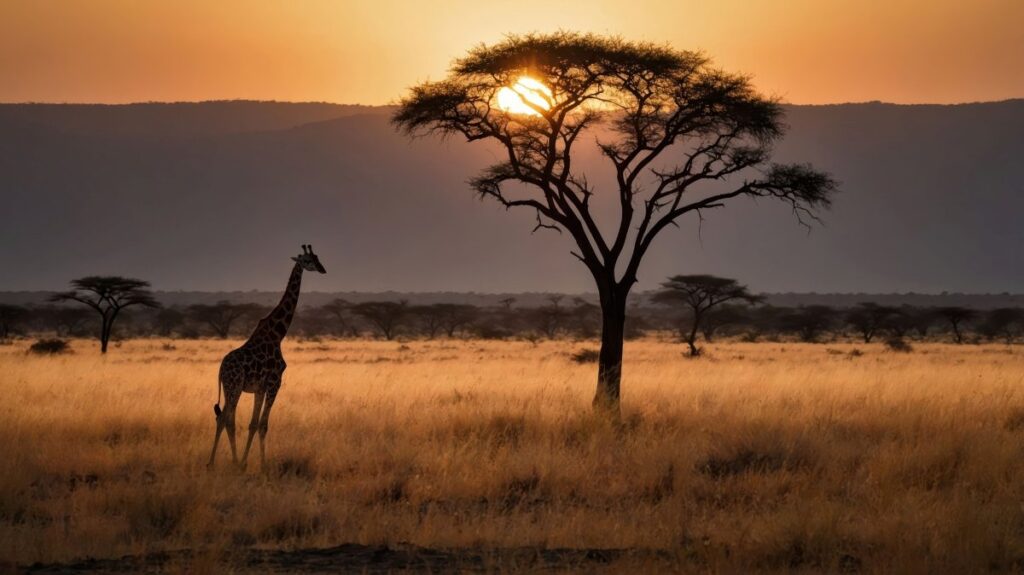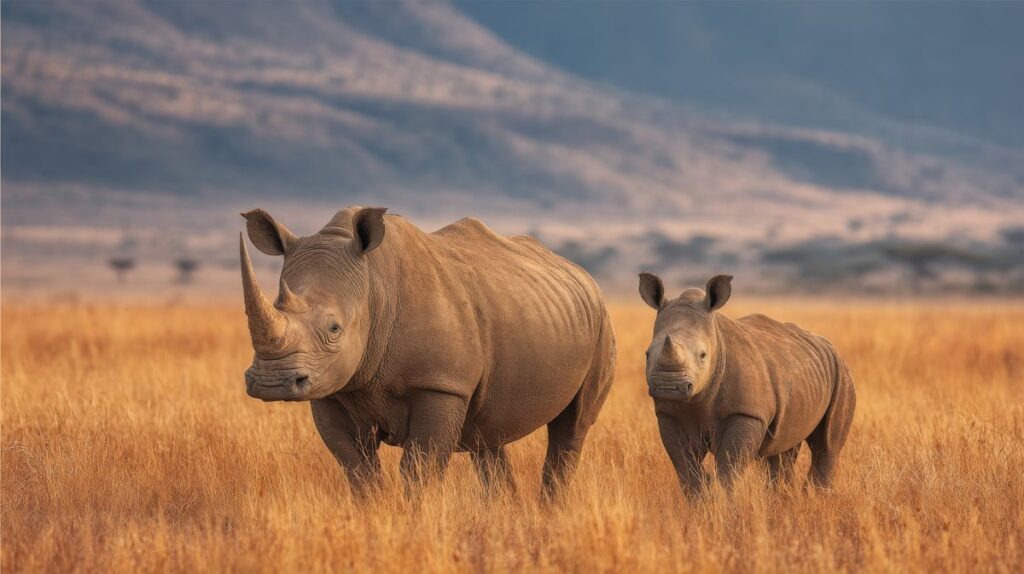
Tanzania is one of those countries that manages to be both instantly recognisable and strangely misunderstood. People know Serengeti. They know Kilimanjaro. They’ve probably heard of Zanzibar, too. But beyond those postcard images? There’s a whole nation full of surprises. So, if you’re after Tanzania facts that go deeper than “it’s in East Africa,” you’re in the right place. Here are some genuinely fascinating things to know.
1. It’s Home to Africa’s Highest Mountain
Let’s start with the obvious. Mount Kilimanjaro, at 5,895 metres, is Africa’s tallest peak and one of the Seven Summits of the world. What makes it unusual is that it’s a free-standing mountain rather than part of a larger range. It rises straight out of the plains – a snow-capped giant above the savannah. Climbers and trekkers come from everywhere to test themselves against its slopes.
2. And the World’s Second-Deepest Lake
Lake Tanganyika isn’t as famous as Kilimanjaro, but it should be. It’s the longest freshwater lake in the world (stretching across four countries) and the second deepest, plunging more than 1,400 metres. Its biodiversity is staggering – hundreds of fish species live here, many found nowhere else.
3. Safari Capital of the World
Yes, Kenya has its safaris, but Tanzania arguably edges ahead. Serengeti National Park is legendary for the Great Migration, when over a million wildebeest and zebra move across the plains in search of water and grazing. Add Ngorongoro Crater, Tarangire, and Ruaha, and you’ve got what might be the most impressive safari circuit on the planet.
It’s also where you can join expertly planned safari adventures that combine multiple parks into one trip, giving you a front-row seat to Africa’s wildest spectacles.
4. More Than 120 Languages
Few realise just how linguistically diverse Tanzania is. Over 120 languages are spoken here, from tribal tongues to colonial legacies. Yet Swahili (Kiswahili) unites the country as its national language, alongside English, which is widely spoken in business and tourism. It’s a country where multilingualism isn’t a skill so much as a way of life.
5. Birthplace of Human History
One of the most important archaeological discoveries ever made lies in Tanzania. At Olduvai Gorge, palaeoanthropologists found fossils and stone tools that shed light on early human evolution. Sometimes called “the Cradle of Mankind,” it’s a place that reminds us our story as humans began right here in East Africa.
6. Zanzibar Adds a Spice Twist
Technically semi-autonomous, Zanzibar is part of Tanzania but retains its own government and cultural identity. Known as the “Spice Island,” it was once a hub of the global spice trade. Today, visitors come for beaches and history, but cloves and cinnamon still scent the markets. It’s another layer to the already complex fabric of Tanzania.
7. Ngorongoro: A Natural Wonder
The Ngorongoro Crater is the largest intact volcanic caldera in the world. Imagine a vast bowl, 20 kilometres across, with walls rising around it and thousands of animals living inside. Lions, elephants, flamingos – you name it. It’s like stepping into a wildlife diorama, only very real and very alive.
8. A Country of Superlatives

Tallest mountain? Check. Deepest lakes? Check. Largest animals? Tanzania is home to Africa’s Big Five: lion, leopard, elephant, buffalo, and rhino. But it doesn’t stop there. Giraffes are particularly abundant here – so much so that Tanzania adopted the giraffe as its national symbol.
9. Political Stability in a Complex Region
While its neighbours have seen upheaval, Tanzania has remained relatively stable since gaining independence in 1961. It merged with Zanzibar in 1964 to form the United Republic of Tanzania. The country’s first president, Julius Nyerere, promoted a philosophy called Ujamaa (familyhood), which shaped national identity even if economic results were mixed.
10. Wildlife Corridors Under Threat
Not all facts about Tanzania are cheerful. The country’s wildlife faces challenges from human expansion, poaching, and climate change. Conservation projects are ongoing, and while progress is uneven, there’s real commitment to protecting the landscapes and species that make Tanzania unique. For visitors, this means tourism dollars have a direct role in supporting preservation.
11. Music and Culture
From traditional drumming to modern Bongo Flava (a Tanzanian spin on hip-hop and R&B), music pulses through everyday life here. Festivals in Zanzibar celebrate both local and international talent, while dance remains a central expression of culture across the mainland. It’s a reminder that Tanzania’s richness isn’t just natural – it’s cultural, too.
12. Coffee and Cuisine
Coffee lovers, take note: Tanzania produces excellent beans, especially from the slopes of Kilimanjaro and Mbeya. Food-wise, expect plenty of rice, maize, beans, and coconut flavours, often influenced by the coast’s Indian Ocean connections. Dishes like ugali (a maize porridge) and pilau (spiced rice) are staples you’ll likely encounter on your travels.
13. A Land of Contrasts
If there’s one overarching fact, it’s this: Tanzania is a country of contrasts. Snow-capped mountains rise over tropical plains. Ancient human fossils lie not far from ultra-modern cities like Dar es Salaam. Quiet fishing villages coexist with bustling safari camps. It’s this diversity that makes it endlessly fascinating.
Final Thoughts
So there you have it: a collection of fun facts about Tanzania that only scratch the surface. From Kilimanjaro’s heights to Lake Tanganyika’s depths, from Stone Age history to vibrant modern culture, Tanzania refuses to be defined by just one thing.
And that’s probably the most interesting fact of all. It’s not just a safari destination, not just a tropical island escape, not just a cradle of human history. It’s all of those things at once. Which means the only real way to understand it is to see it for yourself.

